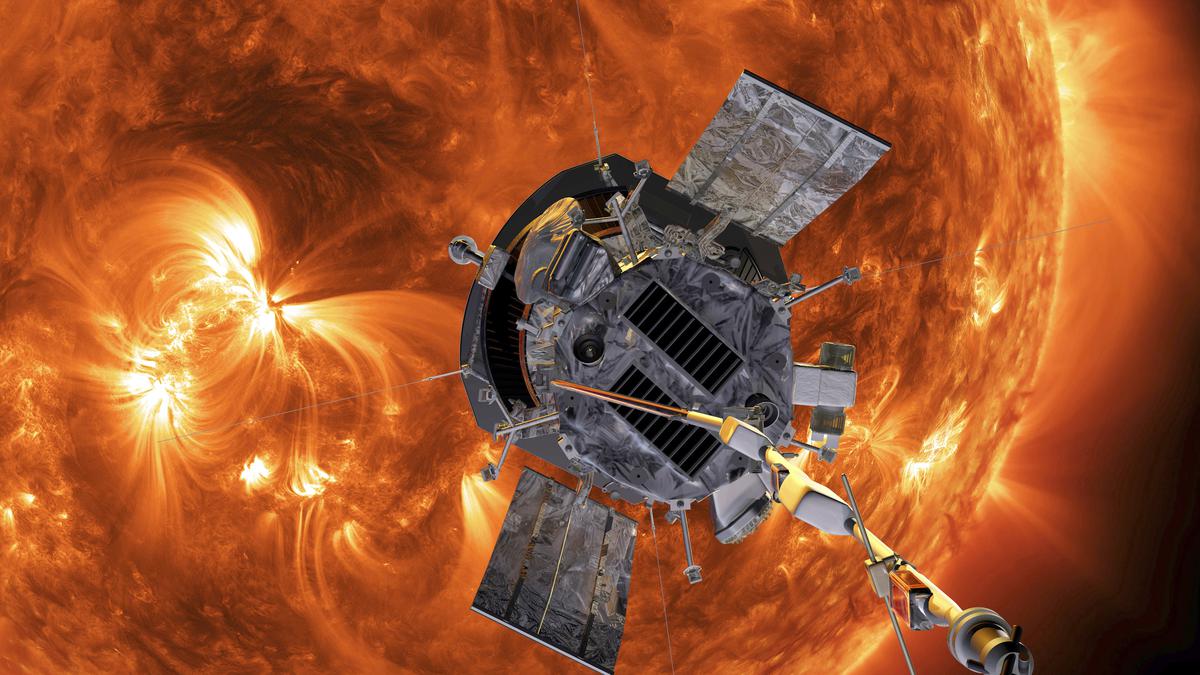
Helios-B’s march to the sun Premium
The Hindu
On April 16-17, 1976, Helios-B made its closest approach to the sun, thereby setting a record for the closest flyby of the sun.
April is here and with it comes searing heat as the sun beats down heavily on most parts of India. You must be aware, however, that the sun, with its entire mass of glowing, boiling heat, is the source of all life on Earth. Our sun, in fact, influences how every object in the solar system is shaped and behaves.
This means that learning more about the sun and understanding it better has always been a priority. Apart from studying it from here on Earth, which is what we did for most of our history, we have also started sending spacecraft to explore its secrets. The Helios mission was one such mission, sending out a pair of probes into heliocentric orbit (an orbit around the sun) to study solar processes.
Following the success of the Pioneer probes, which formed a ring of solar weather stations along Earth’s orbit to measure solar wind and predict solar storms, the Helios mission was planned. While the Pioneer probes orbited within 0.8 AU (astronomical unit, mean distance between Earth and sun) of the sun, the Helios probes shattered that record within years.
A joint German-American deep-space mission to study solar-terrestrial relationships and many solar processes, it was NASA’s largest bilateral project up until then. The Federal Republic of Germany (West Germany) paid around $180 million of the total $260 million cost and provided the spacecraft, while NASA provided the launch vehicles.
Named Helios-A and Helios-B and equipped with state-of-the-art thermal control systems, the pair of probes were renamed Helios 1 and Helios 2 after their launches. Launched late in 1974, Helios 1 passed within 47 million km (0.31 AU) of the sun at a speed of 2,38,000 km per hour on March 15, 1975. While this was clearly the closest any human-made object had ever been to the sun, the record was broken again in a little over a year by its twin probe.
Even though Helios-B was very similar to Helios-A, the second spacecraft had improvements in terms of system design in order to help it survive longer in the harsh conditions it was heading for. Launched early in 1976, Helios 2 was also put into heliocentric orbit like its twin.
Helios 2, however, flew 3 million km closer to the sun when compared to Helios 1. On April 16-17, 1976, Helios 2 achieved its perihelion or closest approach to the sun at a distance of 0.29 AU or 43.432 million km. At that distance, Helios 2 took the record for the closest flyby of the sun, a record that it didn’t relinquish for over four decades. It also set a new speed record for a spacecraft in the process, reaching a maximum velocity of 68.6 km/s (2,46,960 km/h).

Thomas Jefferson and Abraham Lincoln are two of the greatest presidents that the U.S. has seen. You probably know that already. But did you know that Jefferson made what is considered the first contribution to American vertebrate paleontology? Or that Lincoln is the only U.S. president to receive a patent? What’s more, both their contributions have March 10 in common… 52 years apart. A.S.Ganesh hands you the details…












